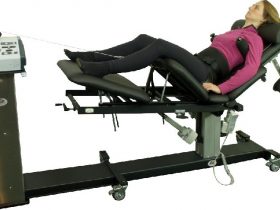Introduction: Electrical burns can happen unexpectedly and require immediate attention to minimize damage and prevent complications. Knowing how to administer basic first aid for electrical burns is crucial for providing quick relief and ensuring the best possible outcome. In this guide, we will explore essential steps to take when faced with electrical burns.
Understanding Electrical Burns:
A. Causes of Electrical Burns:
Electrical burns occur when the body comes into contact with an electric current. This can happen through faulty wiring, appliances, or direct contact with power sources.
B. Severity Levels:
Electrical burns can range from minor to severe. It’s important to assess the severity of the burn to determine the appropriate first aid measures.
Employee safety is a priority. Provide first aid training to equip staff with crucial skills, fostering a secure and healthy workplace environment. Prioritize well-being and preparedness.
Ensuring Safety:
A. Power Off:
Before approaching the injured person, ensure the power source is turned off to prevent further electrical exposure. If possible, unplug the device or turn off the main power supply.
B. Personal Protective Equipment:
Wear non-conductive gloves or use a dry, non-metallic object to move the injured person away from the source of electricity. Avoid direct contact to prevent becoming a secondary victim.
Immediate Response:
A. Call Emergency Services:
If the electrical burn is severe, call emergency services immediately. Professional medical help is essential for assessing the extent of the injury.
B. Ensure a Clear Airway:
Check the person’s airway, breathing, and circulation. If necessary, begin CPR. Electrical burns can sometimes cause respiratory or cardiac issues.
C. Remove Constrictive Items:
Remove any constrictive items, such as jewelry or tight clothing, from the burned area. This helps prevent further complications due to swelling.
Treating Electrical Burns:
A. Cooling the Burn:
For minor electrical burns, cool the affected area with cool (not cold) running water. Avoid using ice, as it may worsen tissue damage.
B. Covering the Burn:
Cover the burn with a sterile, non-stick dressing or clean cloth. This helps protect the area from infection and provides a barrier against contaminants.
C. Avoid Home Remedies:
Do not apply creams, ointments, or adhesive bandages directly to the burn. These can trap heat and worsen the injury.
Monitoring for Shock:
A. Monitor for Shock Symptoms:
Keep a close eye on the person for signs of shock, such as pale skin, rapid breathing, or a weak pulse. Elevate their legs slightly unless it causes pain or further injury.
B. Maintain Body Temperature:
To prevent hypothermia, keep the person warm by covering them with a blanket. Monitor their body temperature and adjust accordingly.
Professional Medical Evaluation:
A. Seek Immediate Medical Attention:
Even if the electrical burn seems minor, seek professional medical evaluation. Internal injuries may not be immediately apparent, and a thorough examination is crucial.
B. Inform Healthcare Professionals:
Provide healthcare professionals with details about the electrical burn, including the voltage involved and any first aid measures taken. This information aids in proper treatment planning.
Conclusion: Administering basic first aid for electrical burns involves quick actions to ensure the safety and well-being of the injured person. By understanding the severity of the burn, taking immediate steps, and seeking professional medical attention, we can contribute to a faster recovery and minimize the potential long-term effects of electrical injuries. Remember, safety and prompt response are paramount in dealing with electrical burns.










